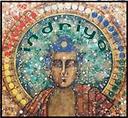Search results for ashtanga (29)
Geschichte des Ayurveda; Ursprung Ashtanga
>> Ayurveda a system of traditional Medicine <<
Was verstehen wir heutzutage unter Ayurveda ?
Betrachtet man den gegenwärtigen Gebrauch des Begriffes Ayurveda, so kann man vier Bedeutungen unterscheiden:
1. Ä�yurveda bezeichnet eine traditionelle gelehrte medizinische Wissenschaft im Indischen Kulturbereich. Auch heute noch wird Ä�yurveda gelegentlich im traditionellen Kontext gelernt. Eine solche Ausbildung erfolgt meist in engem persönlichen Kontakt zu einem Lehrer und ist eingebettet in eine umfassende traditionelle Bildung. Beispielsweise werden eine solide Kenntnis der klassischen grammatischen Wissenschaft des Sanskrit und der klassischen indischen Philosophie als Voraussetzungen für diese Art der traditionellen Ausbildung angesehen. Grundlage für diese Ausbildung sind die klassischen Texte der Ä�yurvedischen Wissenschaft, die in Sanskrit verfasst sind.
2. Ä�yurveda ist heute ein eigenständiges professionalisiertes Medizinsystem in Indien. Im 19. und 20. Jahrhundert hat der Ä�yurveda in Indien einen tiefgreifenden Wandel erfahren, der äußerlich dadurch gekennzeichnet ist, daß die Ä�yurvedische Ausbildung und Berufsausübung nach dem Vorbild der Biomedizin professionalisiert wurde. So wird Ä�yurveda heutzutage an Hochschulen gelehrt und nach einem fünfeinhalbjährigen Studium kann die Approbation als Ä�yurvedischer Arzt (B. A. M. S., d. h. „Bachelor of Ayurvedic Medicine and Surgery“) erlangt werden. Zudem existieren auch eigene Ä�yurvedische Ärztekammern und Forschungsräte.
3. In Europa und Nordamerika ist in den letzten zwei Jahrzehnten eine besondere Form des Ä�yurveda verbreitet worden, die man in Anlehnung an Kenneth G. Zysk (Zysk 2001) „New Age Ayurveda“ nennen kann. Diese Spielart des Ä�yurveda ist gekennzeichnet durch eine übermäßige Betonung von Spiritualität. Die klassische Ä�yurvedische Tradition hat im Gegensatz dazu die religiös-spirituellen Aspekte immer von der ayurvedischen Heilkunde unterschieden.
„Der klassische Ä�yurveda in Indien hat die medizinische Ausbildung des Ä�yurveda bewusst getrennt von der spirituellen und religiösen Disziplin der yogischen Askese.“
4Kenneth Zysk, Indologe (2001, p.24)
4. Ebenfalls in Europa und Nordamerika wird Ä�yurveda in den letzten Jahren oft in den Bereich von „wellness“, d. h. Maßnahmen zur Erhaltung und Steigerung von Wohlbefinden, eingeordnet. Dabei wird die heilkundliche und therapeutische Dimension des Ä�yurveda vollkommen außer Acht gelassen.
4 Quelle: Kenneth Zysk,Kenneth G.Zysk: Medicine in the Veda. Religious Healing in the Veda
ashtanga – acht Glieder, Disziplinen des Yoga
An dieser Stelle wird hier der Versuch unternommen nicht Yoga Übenden, und im Besonderen den Yoga praktizierenden die acht Stufen des Yoga – a s h t a n g a – nach einer kleinen Einführung in die Materie des Yoga näher zu bringen. Zumal meiner Ansicht nach der Begriff ashtanga vor allem in dem zur Zeit stattfindenen Yoga-hype sehr verzogen wird.
Yoga ist ein bewährter, jahrtausende alter, indischer Weg zur umfassenden Gesunderhaltung, bewussteren Lebensführung und Selbsterkenntnis des Menschen. Yoga ist sowohl ein sanfter Weg der Körperertüchtigung für den Körper als auch eine Hinführung zum klaren, toleranten Denken und Handeln.
IISH Heritage Center – Message to the World


The Vedas (Sanskrit वेद véda, „knowledge“) are a large body of texts originating in ancient India. Composed in Vedic Sanskrit, the texts constitute the oldest layer of Sanskrit literature and the oldest scriptures of Hinduism. Read More: > HERE <
The Vedanga ( vedÄ�ṅga, „member of the Veda“) are six auxiliary disciplines traditionally associated with the study and understanding of the Vedas. Shiksha (śikṣÄ�): phonetics and phonology (sandhi), Kalpa (kalpa): ritual, Vyakarana (vyÄ�karaṇa): grammar, Nirukta (nirukta): etymology, Chandas (chandas): meter, Jyotisha (jyotiṣa): astronomy for calendar issues, such as auspicious days for performing sacrifices. Traditionally, vyÄ�karaṇa and nirukta are common to all four Vedas, while each veda has its own śikṣÄ�, chandas, kalpa and jyotiṣa texts. The Vedangas are first mentioned in the Mundaka Upanishad (at 1.1.5) as subjects for students of the Vedas. Later, they developed into independent disciplines, each with its own corpus of Sutras. Read More: > HERE <
A UNESCO World Heritage Site is a place (such as a forest, mountain, lake, desert, monument, building, complex, or city) that is listed by UNESCO as of special cultural or physical significance. The list is maintained by the international World Heritage Programme administered by the UNESCO World Heritage Committee, composed of 21 state parties which are elected by their General Assembly for a four-year term. The program catalogues, names, and conserves sites of outstanding cultural or natural importance to the common heritage of humanity. Under certain conditions, listed sites can obtain funds from the World Heritage Fund. The programme was founded with the Convention Concerning the Protection of World Cultural and Natural Heritage,which was adopted by the General Conference of UNESCO on November 16, 1972. Since then, 186 state parties have ratified the convention. Read more : >HERE<
Message to World – Indian Heritage on science and technology has a history of not less than 5000 years starting from the subjects of mathematics, astronomy, geometry, health science, food science, yoga, Metallurgy (science of metals), space science /air crafts technology, plant science and so on. There are thousands of books catalogued by different organizations and institutions in India and abroad, which are presently available either in the printed form or as manuscripts in palm leaves.
This history record, starts from Vedic period. The mathematics and astronomy were dealt together in hundreds of text books written in Sanskrit and in regional languages.
Mahabhaskareeya, Laghubhaskareeya, Vateswara Siddhanta, Bruhat samhitha, Sidhanta siromony and many similar books still available in the printed form with English commentaries. They give the subject matter qualitatively and quantitatively at par with the modern developments.
The books on health science, Charaka Samhita, Susrutha samhitha, Ashtanga hrudaya and so on written many thousand years ago are the part of curriculum in more than 300 ayurveda colleges in India and more than one hundred institutions outside India.
Indian heritage on the metallurgical sciences (loha thanthra, rasa saastra and so on) also goes back from the period of Yajurveda. Many ancient textbooks describe the rasa sastra and artha saastra giving detailed descriptions on the ores, minerals and methodology of extraction and purification of metals and their compounds, which has been supported by the archeological evidences.
Indian technological heritage has vast area of knowledge from metallurgy, ceramics, glass, textiles, furnaces, leather, civil engineering and architecture, granite and marble, and so on. These are clearly demonstrated in ancient Indian books, cave temples, temples, forts, palaces, etc..
Indian Institute of Scientific Heritage (IISH) was established on the Sravana Pournami day in August 1999 and registered as a charitable trust (328/99/iv) during the last quarter of 1999. Then onwards IISH has been undertaking the mission of learning and teaching the ultra ancient heritage of Bharath(India) using ultra modern scientific and technological tools.
The ultimate aim of this mission is to make every Indian proud of his heritage.
Our aim is to inform the world about the glorious scientific, rational and logical heritage of India and also inform the world to practice and adopt these message in their life to lead a happy life in the 21st century. IISH is undertaking this mission of taking the message to 100 million people before the 31st December 2010. Hundreds and thousands of mission oriented workers are taking part in this patriotic mission of spreading the message of our motherland. We learn and teach the past glory, present achievements and future aims of Indian in each and every field, taking the inspiration for the past glory of this nation.
We inform the world that this heritage of India is the property of Hindus, Muslims and Christians of India and also belongs to all beloved children of this motherland.
Thus IISH spreads the scientific, technological, spiritual, sociological, anthropological, managemental messages to the world, in such a way that these messages can be adopted for the modern world.
Guru Shishya Tradition in Yoga, Veda, Arts
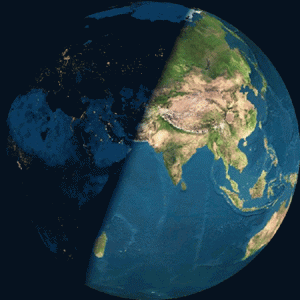
http://eastmeetswestmusic.com/
The guru-shishya tradition, lineage, or parampara, denotes a succession of teachers and disciples in traditional Indian culture and Dharmic Traditions such as Sanatana Dharma, Sikha Dharma, Jaina Dharma and Buddha Dharma. It is the tradition of spiritual relationship and mentoring in traditional Hinduism where teachings are transmitted from a guru (teacher, गुरू) to a ‚śiṣya‘ (disciple, शिष्य) or chela. Such knowledge, whether it be vedic, agamic artistic, architectural, musical or spiritual, is imparted through the developing relationship between the guru and the disciple. It is considered that this relationship, based on the genuineness of the guru, and the respect, commitment, devotion and obedience of the student, is the best way for subtle or advanced knowledge to be conveyed. The student eventually masters the knowledge that the guru embodies. The word Sikh is derived from the Sanskrit word shishya. It is related to the Brahmacharya. Read More: > Here <
Rashtriya Ayurveda Vidyapeeth was established on 11th Feb., 1988 with one of the objectives of promoting knowledge of Ayurveda and started functioning since 1991. The Vidyapeeth initiated the course of Member of RAV with an effort to revive the traditional method of Gurukula system of informal education of India i.e., Guru Shishya Parampara to Ayurvedic graduates after formal education. As people are aware, the present classical texts of Ayurveda, Charaka Samhita, Sushruta Samhita, Ashtanga Hridaya etc. are believed to be the outcome of such informal education. This kind of study is lacking at present in the modern educational institutions where the courses are bound by fixed syllabus, duration of time and many subjects to learn.
Guru Shishya Parampara is the traditional method of residential form of education wherein the Shishya remains with his Guru as a family member and gets the education as a true learner. This system gradually vanished with the disappearance of Gurukuls. However, it is still a very effective means of transfer of knowledge from the Gurus (teachers) to Shishyas (students). RAV is making efforts to revive the system through two types of courses.
In colleges and institutions only a relevant portion of the Samhita (texts of Ayurveda) is being taught in the form of syllabus. Guru Shishya Parampara of RAV facilitates the students to study whole text and get adequate knowledge of Samhita and its Teeka (commentary) and traditional skill for the Ayurvedic clinical practice. The Shishyas get sufficient time for interaction and discussion on the issues taken for study.
COURSES:
- (A)acharya guru shishya parampara, (One-year course of Member of Rashtriya Ayurveda Vidyapeeth) (MRAV)
- (B)Chikitsak guru shishya parampara, (One-year/Six month’s course of Certificate of Rashtriya Ayurveda Vidyapeeth) (CRAV)
- Read More: > HERE <
„The main features of a fruitful Guru-Shishya relationship led to (1) purity of mind and body, humility, a sense of service, and a devotional and spiritual attitude; (2) a thorough grounding of technique and science of music; (3) the gradual development of the disciple as he sits behind his guru at concerts and joins in when asked, but does not perform by himself until his guru finds him fit to do so; and (4) freedom from economic worries by the disciple, living and serving his guru, as a member of his family.“
Pandit Ravi Shankar (My Music, My Life)
PUBLICATIONS: Vidyapeeth has been publishing certain books of Ayurveda, which are found suitable for general public in creating awareness, and also books for Ayurvedic professionals. The Vidyapeeth also publishes the theses of its students after necessary review and recommendation by the Expert Committee and approval by the Governing Body. Further, the Vidyapeeth brings out a Souvenir, containing selected full papers, at the time of Conference/Seminar conducted every year.
SEMINARS/CONFERENCES: Vidyapeeth conducts a Conference/Seminar/Workshop every year on a topic that requires discussion and exchange of the views and clinical experience on the diagnosis and treatment of the disease, mostly the health problems not easily managed by majority of Vaidyas without side effects. So far Conferences/Seminars have been conducted on Kshara Sutra, Heart diseases, Ayurvedic Education, Training and Development, Nadi Vigyan, Fast Acting Ayurvedic Medicines and Techniques, Cancer, Shothahara Avam Jeevanu Nashak Ayurvedic medicines, AIDS, Thyroid disorders, Rasayana, Ayurvedic management of kidney and urinary disorders , Management of Hepato-biliary & Splenic disorders through Ayurveda, Diabetes Mellitus, Mental Health and Vatavyadhis.
AWARD OF FELLOW OF R.A.V.: For achieving one of its objectives, the Vidyapeeth awards Fellowship to the eminent scholars of Ayurveda and practitioners of various traditional Ayurvedic techniques in recognition of their scholarly expertise and contribution in the field of education, research, patient care and literature. In the year 1992 the Vidyapeeth awarded 50 Foundation Fellowships to eminent Vaidyas. Thereafter, a maximum of 30 fellowships are being awarded every year. This is an honorary recognition and a felicitation with a citation, a shawl and a kalash/memento presented to each awardee in the Convocation of RAV. As per rules of the Vidyapeeth, the total number of fellows at any time shall not exceed 300. Every year the Governing Body determines these fellowships on the basis of the bio-data of scholars. So far, 224 scholars have been awarded Fellow of Rashtriya Ayurveda Vidyapeeth (FRAV) Annexure – IV.
CONVOCATION: In order to fulfill the objectives of the Vidyapeeth viz. to institute due recognition to successful candidates and to recognize and encourage merit in various branches of Ayurveda, the Vidyapeeth holds Convocation every year for awarding certificates to passed out students and to felicitate eminent scholars and Vaidyas with Fellow of Rashtriya Ayurveda Vidyapeeth (FRAV) for their significant contribution for the progress of Ayurveda in the fields of education, research, literature and health care.
A guru (Sanskrit: गुरु) is one who is regarded as having great knowledge, wisdom and authority in a certain area, and who uses it to guide others (teacher).
In sanskrit gu means darkness & ru means light. As a principle for the development of consciousness it leads the creation from unreality to reality, from the darkness of ignorance to the light of knowledge. In its purest form this principle manifests on earth as a divine incarnation (saint), a person with supreme knowledge about God and all creation. Other forms of manifestation of this principle also include parents, school teachers , non-human objects (books) and even one’s own intellectual discipline.
The syllable gu means shadows
The syllable ru, he who disperses them,
Because of the power to disperse darkness
the guru is thus named.
– Advayataraka Upanishad 14—18, verse 5
In the religious sense the term is commonly used in Hinduism and Sikhism, as well as in Buddhism and new religious movements.
Finding a true guru is often held to be a prerequisite for attaining self-realization. Guru Nanak, founder of the Sikh religion said: „Even if a thousand suns and moons rose, they would be unable to remove the darkness of ignorance within the heart. This can only be removed through the grace of the Guru.“
„Guru“ also refers in Sanskrit to Brihaspati, a divine figure in Hinduism. In Vedic astrology, guru or Brihaspati is believed to exert teaching influences.[clarification needed] Indeed, in many Indian languages such as Hindi, the occidental Thursday is called either Brihaspativaar or Guruvaar (vaar meaning day of the week).
In contemporary India, Indonesia and the Philippines, the word „guru“ is widely used with the general meaning of „teacher“. Guru in Buddhism, Hinduism, Sikh…Gurukulam System in Tradititional KALARI… Read More: > HERE <
In Western usage, the meaning of guru has been extended to cover anyone who acquires followers, though not necessarily in an established school of philosophy or religion. In a further Western extension, guru is used to refer to a person who has authority because of his or her perceived secular knowledge or skills, such as in business.
Weblinks: > yoga-vidya.de < ( no english translation avaiable) – ….Ishwara selbst ist der ursprüngliche Guru (Lehrer). Unsere Guru Parampara (Schüler-Lehrer-Tradition) beginnt bei Narayana. Narayana ist Vishnu, also eine Manifestation von Ishwara. Die Hatha Yoga Guru Parampara fängt bei Shiva an. Alle Guru Paramparas in Indien fangen letztendlich mit Gott an, indem ursprünglich ein Lehrer die Weisheit direkt von Gott empfangen hat. So ist Gott der Lehrer aller Lehrer..
- www.punarjanis.com (Dr. E. Shaji Raj)
- www.unom.ac.in
- www.hihtindia.org (Himalayan Ayurveda Hospital Trust)
- AYURVEDA, Prime Treatments in Ayurveda <
- AYURVEDA4UAll <
- Meet Yoga Vidya English, friends and Studies at fb <
- Meet Ayurveda Friends, Groups, Studies at facebook <
- Meet Ayurveda4UAll, friends, Studies at facebook <
- Meet CODEX ALIMENTARIUS friends and group at fb <
- Meet FREE Visa to India for MBA, Degree Programs , it jobs at fb <
- Meet Lord Dhanwantri, friends, studies at facebook <
VEDA, TREE´s AND THE HOLY SCRIPTURES
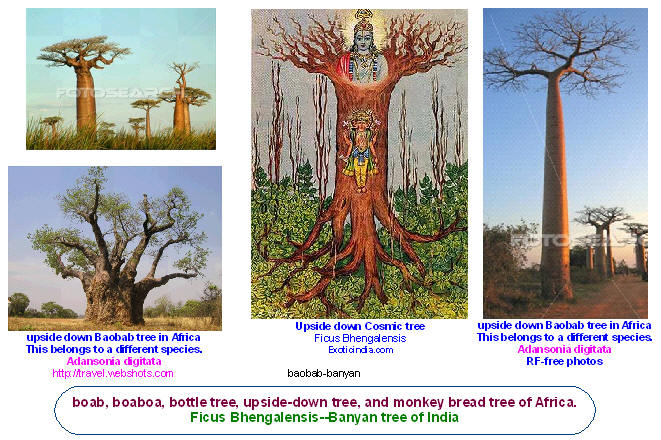
> Sanskrit Web / Yayurveda, Taithreeya Aryanka <
> BIHAR SCHOOL OF YOGA, SRI SIVANANDA MATH <
The Aranyakas/Wald Texte der Veden, (Sanskrit आरण्यक Ä�raṇyaka) are part of the Hindu śruti, the four Vedas; these religious texts were composed in Late Vedic Sanskrit typical of the Brahmanas and early Upanishads; indeed, they frequently form part of either the Brahmanas or the Upanishads. „Aranyaka“ (Ä�raṇyaka) means „belonging to the wilderness“ (araṇya), that is, as Taitt.Ar.2 says, „from where one cannot see the roofs of the settlement“. They contain Brahmana-style discussion of especially dangerous rituals such as the Mahavrata and Pravargya, and therefore had to be learned in the wilderness. They have also served as receptacles of later additions to the Vedic corpus. However, they have nothing to do, as later tradition has it, with Sannyasins or Vanaprasthas and they are not of „mystical“ nature but very close to the Brahmanas proper. Read More: > HERE <
The Taittiriya Upanishad is one of the older, „primary“ Upanishads commented upon by SHANKARA. It is associated with the Taittiriya school of the Yajurveda. It figures as number 7 in the Muktika canon of 108 Upanishads. It belongs to the Taittiriya recension of the Yajurveda and is constituted by the seventh, eighth and ninth chapters of Taittiriya Aranyaka.
The tenth chapter of the same Aranyaka is the Mahanarayana Upanishad. The Taittiriya Upanishad describes the various degrees of HAPPINESS enjoyed by the different beings in creation. Read More: > HERE <
Real Identity of Asvattham tree. It is called “Arasa Maram”
There is some confusion in books about the identity of Asvattham tree. It is called “Arasa Maram” (Ficus religiosa) in Tamil Nadu, Ravi-manu in Telugu, Aruli-mara in Canarese. One calls it a Palm tree; another calls it Pipal (Ficus religiosa-pagoda fig-tree); and yet another calls it Banyan Tree (Ficus Bhengalensis) with the adventitious aerial roots. Both (the latter two) are related to each other. It is a humongous tree with bright green leaves chatting with each other with a pat on the back as they rustle in the gush of wind. It is music to the ears. The breeze sets the leaves dancing in the wind and doing partial pirouette on their spindly petioles. When the wind quiets down, the song and dance stop suddenly.
One thing we know is that it is a cosmic tree. The berry of the Pipal is sweet, and Soma (intoxicant) is prepared from its juice according to some accounts. (There is another claim that says the soma juice comes from a mushroom.) Images of Pipal tree appear on the Harrapan seals. Asvattham is said to be a “body-tree.” “A” is no; “THA” is existence; “Shva” means “after tomorrow:” No existence after tomorrow. It tells us that life is precarious. The body tree itself is imperishable (HAM), because God pervades it.
The tree is rooted in heaven and since its aerial adventitious roots go down to anchor to the earth and Prakrti (matter), we are susceptible to the temptations of evil. The middle branches are the men and the sap that keeps flowing inside and sustaining the branches are the Gunas (modes). Cutting the branches and the aerial roots figuratively depicts transcending the gunas and a move to a higher plane― that of SannyÄ�si.
In Chinese lore, the body is compared to the Bodhi tree (Tree of Wisdom). Katha Upanishad 2.3.1: With the root above and branches below the fig tree stands: That is pure, That is Brahman, That is immortal. In It the world rests and no one goes beyond it. The upside down Tree of Life has roots in Brahman: The tree, the roots, the trunk, and the branches represent Manifest Brahman or the phenomenal world of Isvara, matter and beings.
Katha Upanishad describes Manifest Brahman as follows: He is self-born and first-born from the waters (Mula Prakrti, root cause or matter) by an act of meditation. He resides in the cave of the heart of beings and is immanent in all causes and effects. He who knows this knows the Absolute in Him. Verse 2.1.6
It goes on to describe the Mother Goddess. She is Aditi, the Boundless. She is born as Prana (Breath or life) from the Absolute genderless Brahman, the nameless, and the formless. She is the Devatamayi (Mother of gods) and the soul of all beings. She stands in the inner recess of the heart. Verse 2.1.7
The Buddha attained enlightenment under the Bo tree; Bo is short for bo-gaha, tree of wisdom; Bo tree is Pipal or Banyan tree; Bo is wisdom, Bodhi is enlightenment, Buddhi is knowledge and the Buddha is he who attained enlightenment. Bodhisattva is potential Buddha meaning that the aspirant has wisdom (enlightenment) and virtue (Bodhi + Sattva).
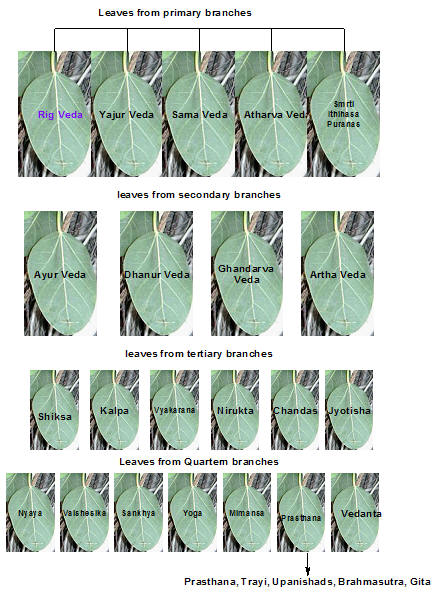
Krishna states that He is Asvattha tree among trees. Jesus Christ says that he is the true vine. It appears the trees have souls from what Lord Krishna and Jesus Christ say. Why are we cutting them indiscriminately and depleting our forests?
Sage Narada cursed the two sons of Kubera to become trees for knowingly playing naked in the shoal of a river with Ghandarva women. (You thought that having a shower mate is a modern phenomenon: not so from what you read here.) The young women in a turn of modesty put on their clothes while the Kubera’s sons ignored the sage, who cursed them to become trees for their feral nature, arrogance, insolence, and ignorance; Krishna released their souls and bodies after one hundred divine years by uprooting the trees.
Krishna drank water from River Sarasvati, sat, and meditated under Asvattha (Pipal) tree in a reclining position, before his departure to Goloka, Bhagavata Purana 3.4.3 and 8. River Sarasvati went dry before 1900 B.C. At present Sarasvati River features as a pentimento from satellite earth images.
Mantra Pushpam – Vedic Hymns
This mantra is from Taithreeya Aranyakam of Yajur Veda
Asva, meaning horse, is the root word for Asvattha, the tree; Asvamedha, horse sacrifice; Asvatthaman, he who cried like a horse at birth; Asvatthaman, the elephant; Asvini, the wife of Asvins, who took the form of a mare; and Asvinikumaras, the sons of Asvini-the sons of a mare. Asvattha tree gained such name because people used the tree’s shade as shelter for horses. Professor Bokonyi of Hungary an expert in the anatomy of horses tells that the true horses were present in Kutch area during the late Harappan period. The Aryans migrated from India in several waves to Iran to Caucasus riding on the horses as early as 4000 B.C. Rg Vedic civilization was before 5000 B.C. Indo-European languages have loan words like Aspa, Aihva, aszva, aspa, asa, iss, issi, issia, assa, sisu, equus. Where did they originate from? Yes, from Sanskrit. Let us look at another view. Domestication of horse: the credit goes to Akkadians; that is one view. The majority opinion is that the Indo-Aryan was the first domesticator of the horses. They wrote the first manuals for horse training.
Between 2000 B.C. and 1700 B.C. the Aryans (the late comers) in Babylon domesticated the horses which were then called the ass of the East. The horse was later introduced in Egypt before 1580 B.C. The Aryan victory march was attributed to tamed fast horses and chariots.
Sri Swami Satyananda Saraswati calls this tree The Mystical Tree. He says that this imperishable tree has roots above and branches below. The human body, according to him, resembles the upside-down tree in that the brain forms the root structure; the spinal column, the tree trunk; and the leaves, the thoughts, emotions and distractions. The occult truth and the secret knowledge of the Mystical Tree cannot be understood until the aspirant gets spiritual awakening.
Let me touch upon the significance of tree in Christianity. As you see Krishna’s image on the cosmic tree, it reminds us of Jesus Christ on Holy Rood, the tree of immortal life, and he is himself the fruit of the tree. Jesus on the cross, the Buddha under the tree, and Krishna on the cosmic tree–my interpolation, are the same figures. Page 107 The Power of Myth, by Joseph Campbell. Joseph Campbell, the universal man, sees oneness in Jesus Christ and the Buddha. Campbell is one among the rarest of breeds who knows the essence of (a generic) religion. He can see through the apparent differences among the religions and find the common Truth.
15.2: Its branches extend downwards and upwards nourished by Gunas, with sense objects as shoots or sprouts; and its roots extend downwards to the world of men, bound to karma.
The tree has many adventitious roots, coming down from the tree branches; the wider the tree grows the more adventitious roots there are. These adventitious roots, compared to ego, ignorance and vasanas supporting the heavy branches grow down, while the cosmic roots of the tree trunk grow towards heaven and anchor in Brahman. The lower branches are synonymous with human beings, animals, birds, reptiles, worms, insects, and insentient and immovable matter. The upper branches are comparable to Ghandarvas, yaksas, gods, and goddesses.
The sap of Gunas nourishes the branches, the product of Prakrti; the sap flowing through the upper branches contains Sattva (goodness and virtue), while that of the lower branches comparable to animals, contains Tamas (ignorance and delusion). The middle branches are the men with varying combinations of the Gunas and thrive by the sap of Sattva, Rajas, and Tamas in varying combinations. The adventitious roots of the middle and lower branches represent bondage of the human beings and animals. The lateral branches are the sense objects, namely sound, vision, smell, taste, and touch; the growing ends of lateral branches are the ears, eyes, nose, mouth, and skin; the leaves representing the Vedas reach for the sun and illumination from God.
The adventitious roots originate from branches, which draw nourishment from Gunas: they are extensions of these branches and therefore of the gunas, which are responsible for the way men behave. The adventitious roots or the gunas anchor to Prakrti and bind the jivatma to karma and therefore to Sams�ra. In this world of beings, man has the most opportunity to advance to a higher state, fall to lower state, or remain in the same state. The animals are born in the lower state because they have to resolve the pr�rabda (past) karma inherited from the past life; they do not accumulate new karma in the present life because their acts are commensurate with their animal traits; and they are incapable of making informed choice from Sattva, Rajas, or Tamas. But, man on the other hand can accumulate new karma because he can choose his (thought), word, and deed.
Krishna in his discourse in The Uddhava Gita, Dialogue 7.21-7.24 describes the Tree of Life. (based on translation by Swami Saraswati.)
The tree of Samsara bears flowers and fruits; good and bad deeds are its seeds; desires are its deep roots; Sattva, Rajas, and Tamas are its support; earth, water, fire, air, and ether are its five secondary branches through which five kinds of sap (smell, taste, sight, touch and hearing) flow. The five branches fork into ten branches: five motor organs, five sensory organs plus the mind. Two birds (The Supreme One and Ahamkara) live in their nests in the branches. The bark has three layers, the three humors of the body: wind, bile and phlegm. The tree bears two fruits: joy and sorrow. Some eat the fruit of sorrow; some on right path eat the fruit of joy. Krishna tells Uddhava to cut down the tree and free the Self, identifying himself with the Self.
15.3: Neither its form nor its end nor its beginning nor its support is seen. Having cut this firm-rooted Asvattham tree by the strong weapon of detachment…
15.4: Thereafter, seek out that goal, attaining which one does not return again. Surrender to the (first and) Primal Person from whom the ancient manifestation comes forth.
We have to cut the adventitious roots to prevent lowermost branches from getting the sap of Tamas (darkness and delusion); then we have to cut the adventitious roots, which supply the Rajas sap (motion and passion) to the middle branches; now we are left with the upper branches (and their adventitious roots), whose sap is Sattva (goodness, virtue, and calmness). To attain to Brahman, we have to transcend all three Gunas and therefore have to cut the tree, roots, and all. The tree represents the nonself or Prakrti, and we have to separate the Jiv�tman from Prakrti, so it merges with the Higher Self.
Let me explain what attaining to Brahman means. It points to a certain quality of life and behavior. It is simply not having the didactic knowledge of the Holy Scriptures; it is not simply the rituals alone. Dharma, duty; sama, equanimity; dama, self-control; vairÄ�gya, indifference to worldly objects; uparati, desisting from sensual enjoyment; sraddhÄ�, faithfulness; and atha, “much more or more over,” (auspiciousness, authority, flair and divine grace) are the preconditions for reaching Brahman. The fit person is the one who knows his Vedas, has the attributes (described above), and is devoted to the Lord only and detached from the world.
- Dharma
- Sama
- Dama
- Vair�gya
- Uparati
- Sraddh�
- Atha
- Duty
- Equanimity
- Self-control
- Desirelessness
- Abstinence
- Faithfulness
SraddhÄ� is implicit faith in Hindu Holy Scriptures. “Atha” has no English equivalent and means “much more” or “more over” meaning auspiciousness, authority, flair, and divine grace.
15.5: The wise ones, without false pride and delusion, having vanquished the evil of attachment, eternally devoted to the Supreme Self, divorced from passion (KÄ�mÄ�h), free from dualities of HAPPINESS and distress, and delusion, reach the eternal state. ( Suka and Dukha = þýÀõ (Inbam) and ÐýÀõ (Thunbham) = HAPPINESS and distress.)
- FULL ARTICLE with reference to horses, veda <
- Bhagavad Gita & the President’s remarks at the Nobel Peace Prize ceremony Oslo.
- ARTICLES, DEIN AYURVEDA NET:
- The Holy Bodhi Tree
- The mystical tree – In the Bhagavad Gita
- The Baobab Tree, Africa´s Medicine, Social Project
- Brihad Aryanka Upanishad and Stars
- Brihad Aryanka Upanishad and Trees
- Yoga, Ayurveda und Siddha Medizin
- Ashtanga Yoga and the Tanthram Tree
- Veda, Smriti and Sruti
- Gunas im Ayurveda und Yoga, Grundprinzipien
- Adi Shankara, Books, Arts, Studies
- YOGA LITERATUR ÜBERSICHT
Gross Elements in Ayurveda, Yoga, Buddhism
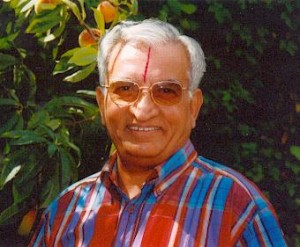
> Principle of Tridoshain Ayurveda <
MahÄ�bhūta is Sanskrit and PÄ�li for „great element.“In Hinduism, the five „great“ or „gross“ elements are ether, air, fire, water and earth. In Buddhism, the „four great elements“ (Pali: cattÄ�ro mahÄ�bhūtÄ�ni) are earth, water, fire and air. Read more: > HERE <
The Principle of Vata, Pitta and Kapha
The Physiology of Âyurveda is the physiology of the all-important trio, Vâta, Pitha and Kapha or Tridosha as they are generally called. Anybody, even faintly acquainted with Ayurveda, must have frequently come across the terms Vâyu, Pitha and Kapha. But very few have any clear idea of what is really meant by the terms. Every grown-up Indian has some vague idea about Vayu, Pitta and Kapha, and the terms are also used in common parlance. But in the majority of instances, the popular conception is quite different from the medical one. We have ample reference in Ayurvedic literature to the properties and different functions of Vatu, Pitta and Kapha, both in their normal and abnormal conditions. But we have no direct evidence by which we can come to a definite conclusion regarding the ultimate nature of these three substances. All that we can do is to make some inference based on reason, by a comparison of the original texts of Charaka, Sushruta and others and supplemented by such evidence as we can get from non-medical sources.
Yet Vâtha, Pitha and Kapha are the three entities on which stands the whole foundation of Ayurveda; we have to deal with them from the beginning to the end. Without their proper knowledge, successful treatment of diseases according to the Ayurvedic System is quite impossible. Before proceeding further, it is necessary that we should know something of the conception of the ancient Hindus regarding the physical world. Charaka and Sushrutha have mainly followed the Nyâya-Vaisheshikha and Sâmkhya-Yoga systems of Philosophy and occasionally the Vedanta view of the five Bhuta.
The nature and Physical Properties of the Tridosha.
The fundamental principle underlying the Ayurvedic System of Medicine is that of the Tridosha. In a nutshell, this Principle may be stated as follows:
There are three Dosha, Vâyu, Pitta and Kapha, which when in equilibrium keep the body sound, but which when vitiated, either singly or in combination, bring about diseases. The method of treatment would therefore be to bring the vitiated Dosha back to normal state, so that the three Dosha are again in equilibrium. We have seen that Âyurveda developed from the four Vedas; it is also regarded as a supplement of the Atharva Veda. But nowhere in the four Vedas can we find any specific mention of these substances.
It is in the Rig Veda only (1.3.6) that we find what may be regarded as the root idea of Vâyu, Pitta and Kapha :
“Tri-no asvinÄ� divyÄ�ni bhesajÄ� trih pÄ�rthivÄ�ni trirudattamadvyaha;
Om�nam samyor-manma k�yasunave tridh�tu sarma vahatam subhaspat�.
Here “tridhÄ�du sarma vahatam” has been explained thus by the commentator SÄ�yana: That is to say that when the three Dhâtu – Vâyu, Pitta and Kapha – remain normal and undisturbed, the body is at ease and there is no disease.
With the advancement of the knowledge, when the science of medicine was systematically studied, Âyurveda as a separate and special subject evolved out of the Vedas. The Principle of Vâyu Pttha and Kapha, was then fully developed and so we find copious reference to these terms in the Mahâ Bhârata and Upanishads.
Draya explained:
Dravya is defined as „that which contains in it action and quality and is a co-existent cause“. (C. S. I. 1.50 ; V. S. I. 1. 15). Substances exist and have qualities. We have two kinds of qualities, those which reside in a plurality of objects and those which are confined to individuals. The former are the general qualities (sâmânya), while the latter are distinguished as permanent (guna) and transitory (karma). Inherence is a special kind of relation. Relations are of two kinds. external like, conjunction (samyoga), or internal like inherence (samavâya). The first is regarded as a quality and the second is made a separate category.
The Vaisheshika believes that a substance is something over, and above the qualities. It is anxious to assert the existence of something which has qualities without being itself a quality, for we predicate qualities of substances and not qualities of qualities. Nor can it be said that we predicate one quality of a group of qualities. But since a substance cannot be conceived apart from qualities, it is defined as possessing qualities.
Qualities and action exist by combination with substance. Without substance, there were no qualities or action. Similarly, genus and species are correlative and are not absolute, except in the case of the highest genus which is Existence (bhâva) and the lowest species which is vishesha or individual characteristics appertaining to and inhering in the external substances. Genus and species, therefore, exist by combination with substances. Without substances, there were no genus and species. Similarly Samavâya or combination is “the intimate connection in the inseparably connected things“, e.g. parts and wholes of substances and their qualities, of action and the seat of action of genus and species and substances in which they reside, and of external substances and their ultimate differences. Without substance, then, there were no combination. Substance or dravya, therefore, is the fundamental reality.
Dravyas are nine in number, viz. the five Bhutas,
- 1. Prthivi (Earth)
- 2. Apah (Water)
- 3. Tejas (Fire)
- 4. Vâyu (Air)
- 5. Âkâsha (Ether
and
- 6. âtman (Soul)
- 7. Manas (Mind)
- 8. Dish or dik (Space) and
- 9. Kâla (Time).
These nine substances are intended to comprise all corporeal (murta) and incorporeal (a-murta) things. Ether, time and space are all-pervading, have the largest dimensions and are the common receptacles of all corporeal things. Soul and mind, Ether, time and space, Air and the ultimate atoms are not ordinarily perceptible, (V. S. VIII. 1.2).
[It must be clearly understood here that whenever we use the terms Earth, Water, Fire, Air and Ether, we use them only to denote the five bhutas and not in the sense of ordinary earth, water, air, fire or ether]
Charaka says that dravyas are of two varieties, – animate and inanimate. Those endowed with the senses are called animate; those devoid of senses are inanimate, (Sendriyam cetanam dravyam, nirindriyam acetanam, C. S. I. 1. 47.)
The Nature Of Citta According To The Yogasutras Of Patanjali
The five Mahâbhutas
The five Mahâbhuta originate from the five Tanmâtra. Of these, the Prthivi helps the other four by being their support. Ap helps the other four by moistening. Tejas helps the others by ripening. Marut helps by drying and Akâsha helps the other four by giving space. Prthivi is possessed of five qualities, – sound, touch, colour, taste and smell. Ap is possessed of four qualities,- sound, touch, colour and taste. Tejas is possessed of three qualities, sound; touch and colour. Vâyu is possessed of two qualities, – sound and touch. Akâsha has only one quality, sound.
We thus get :
Âkâsha/ Aether – (Sound-essence)
Vâyu/ Air – (Sound + touch)
Tejas/ Fire – (Sound + touch + colour)
Ap/ Water – (Sound + touch + colour + taste)
Prthivi/ Earth – (Sound + touch + colour + taste + smell).
Though Earth contains a number of qualities; we yet say that it has smell, on account of the predominance of this quality. If water and other substances besides earth possess smell, it is because particles of Earth are mixed up with them. We cannot think of Earth without smell, though we can so think of air and water. The special quality of Water is taste. Fire has for its special quality luminosity. Air is invisible, though limited in extent and made up of parts. The discrete nature of Air is inferred from the movements in the air, which would not be possible were Air an absolute continuum devoid of parts (V. S. II.1.14). Its existence is inferred from its special quality of touch and it is said to be a substance, since it possesses quality and action.
According to the Vaisheshika, the ultimate constituents of the concrete things of earth, air, fire and water are called paramânu or atoms.
Charaka has pointed out the primary qualities or special physical characters, of the five Bhuta in a different way. He says, „The characteristic of Earth is roughness, that of Water liquidity, of Air expansion, of Fire heat and that of Ether non-resistance. All these qualities are perceived through the sense of touch,“ -„Sparshendriya gocharam“, (C. S, IV. 1,27 ).
Bhutas are not elements
The Bhuta has been translated as ‚element‘. This is misleading. Bhutas are not elements and paramânus are not atoms or molecules in the modern sense of the terms. Modern writers laugh at the idea of calling the earth, water, fire, air and ether elements, ignoring the fact that a Bhuta is just an element, in the chemical sense of a substance that cannot be further analysed. „On referring to any Vaisheshika manual, it will be clear that what is ordinarily known as ‚earth‘, is not regarded by the Vaisheshika to be an ‚element‘ – in the technical sense; if it were so regarded, then alone could the Vaisheshika view be stigmatised as primitive and unscientific. The touch of ‚Earth‘ in its pure state is said to be ’neither hot nor cold’ so also the touch of ‚Air‘ and when asked why the ordinary earth and ordinary air are found to be very far from ’neither hot nor cold‘, the Vaisheshika explains that this is due to earth and air being mixed up with particles of Fire or Water, which make them hot or cold. From this, it is clear that what is regarded as ‚element‘ is not the earth etc., as we know and see them, but as they exist in their pristine and pure state, unmixed with any other substances“. Just as an atom of a chemical element has no free and independent existence, so also the five Bhutas in their pure state are never found in nature. What we find are compounds of the five Bhutas, mixed together in different proportions; that is to say, all gross matter is penta-bhautika.
Psychological explanation of the five Bhutas
The question may be asked, why were only five Bhutas postulated? Now, God has endowed us with only five senses, neither more nor less. The external world can only be apprehended by us through these five senses or Indriya. There is no other source which can give any information about matter which constitutes the physical world. For one particular lndriya, there is only one particular sense-object. The srotarerdriya or the sense of hearing can appreciate only the quality of sound. Sound, touch, colour, taste and smell are the five sense-objects corresponding to the five senses. These are gunas, and as such cannot exist independently by themselves, but must have some receptacle. In this way, we get five receptacles,- the five Bhutas.
What, for example, is the ‚atom‘ of Earth, but an ultimate material substratum of odour. On the other hand, let us take the case of the coloured gas Chlorine. It can be felt, smelt, tasted and seen. We are cognizant of its existence by at least four different sensory impressions; therefore it is not an element in the Vaisheshika sense of the term; it must be composed of at least four different Bhuta. The Hindu classification of matter into five Bhuta is, therefore, not at all absurd, as is supposed by many scientists who have an altogether different viewpoint.
According to Dr. Ganganath Jha, what the Vaisheshika means by saying that there are five Bhuta, is that there are five states of matter, viz., solid (Earth), liquid (Water), gaseous (Air), luminous (Fire) and etheric (Akâsha). It is better, however, to regard them as the Ashrayas or repositories of the five qualities,. viz. of smell, etc.
The confusion has been introduced by denoting the Bkutas by terms which are also used with reference to external objects of matter, such as earth, etc. But, as Hoffding says, „because language was developed under the influence of attention directed to the external world, we find that expressions for mental phenomena were originally taken from the material world. The inner „World behind is denoted by symbols borrowed from the „outer world of space“.
Contemplation of the elements (dhatu, mahabhuta) as a meditation method taught by the Buddha.
Hindu Medicine and the Vedas:
There is no doubt that the germ of Hindu medicine was laid in the Vedas. Because in all the four Vedas, – Rig, Yajur, Sâma and Athravana, – we find ample reference to medicine, drugs, methods of treatment and descriptions of the different parts and organs of the human body.
For example, reference is made to Dhanvantari in R.V IX. 112. In R.V. 1.117. 13 and V.74.5, we find that Chyavana was rejuvenated by the Ashvini Kumâras. ln 1. 23. 19, the medicinal properties of water are described. Reference is made to phthisis in R. V. X. 163 and to the organs of the body in R. V. III. 36.8, III. 50. 6, VI. 53. 8, VIII. 1. 26, X. 1. 84, X. 163 and X. 186. Similarly in the Sâma Veda II. 10. 70. 184 and in the White Yajur Veda XII.74. 75 and the 16 hymns that follow, we have reference to the medicinal properties of drugs.
But it is the Atharvana Veda which deals more fully with medicine. Here we have reference not only to mineral and vegetable drugs but also the causes of diseases (A. V. I. 23, 24, 36 ). „This work in its tenth book contains“, as Dr. Hroernle notes, „a hymn (the second) on the creation of man, in which the several parts of the skeleton are carefully and orderly enumerated in, striking agreement more specially with the system of Atreya as contained in Charaka’s Compendium“.
It is for this reason that the Ayurveda is generally included in the Atharvana Veda. This is also distinctly indicated by both Charaka and Sushruta. Sushruta (1. 1) calls it the Upânga of Atharvana Veda; and in Charaka Samhiaf (1. 30), we find that Atreya’s advice to his pupils was to have faith in the Atharvana Veda, because the latter deals with the treatment of diseases in the form of religious rites, sacrifices, oblations, expiation, fasts, the chanting of hymns, etc.
If we take the time of the Vedas to be 2000 B. C., we see that as early as this, the practice of medicine was in a very crude form. Nowhere in the four Vedas, can we find any mention of the term ‚Ayurveda‘. So we may take it that when later on the medical side of the Vedas was more fully and systematically developed, it formed a separate subject by itself and came to be known as Ayurveda.
- Dein Ayurveda Net:
- Samkhya Philosophie im Yoga
- Tattvas im Ayurveda und Yoga
- Die Veden, ein Überblick, Overview
- Arthavaveda
- Yoga in Buddhism
- Krishnamachar B.K.S. Iyengar, Bellur School, Patanjali Temple
- www.patanjaliyogafoundation.com
- yogena chittasya padena vacham malam sarirasya cha vaidyakena | yopakaroti tam pravaram muninam patanjalim pranajaliranato’smi || Let us bow the noblest of sages Patanjali, who gave Yoga for serenity of the mind, Sanskrit grammar for purity of speech and Ayurvedic medicine for the perfection of health.
- Meet all Ayurveda Groups, Friends, Studies at facebook <
- Meet Lord Dhanvantri at facebook <
AYURVEDA CONCEPT OF RASAYAN THERAPY

( ayurveda4uall’s Photos – ALL India confrence Delhi 7-8 Oct )
Rasayan, a Sanskrit word (with literal meaning: Path (ayana) of the Juice (rasa), or Elixir vitae), is used to describe chemistry and alchemy, and chemistry is generally called Rasayan Shastra in Sanskrit,Nepali, Marathi, Hindi, Kannada and several other languages. Ancient rasayan texts center around the use of prepared forms of mercury (see samskaras), as do occidental alchemical texts. However, there is also ample mention of the preparation of medical tinctures in the ancient science of rasayan; rasayan is in fact a part of Ayurveda. Read more: > HERE <
Concept of Rasayana Therapy
Rasayana Tantra is one of the eight major divisions of Astang Ayurveda. In Ayurveda, one of the major methods of presentation of positive health has been described i.e. Rasayana.
Sushruta has defined a healthy man as one who has:-
• Equilibrium of the Doshas Sama dosha.
• Normal functioning of Agni Sama Agni
• Normal condition of 7 Dhatus Sam Dhatu
• Normal Excretion of waste products Sam Malkriya.
Beside this Atma (Soul), the Indriyas or sense organs and Mana or mind should be happy and cheerful Prasanatamendriya Mana (Su.Su.15/15). The current modern definition of health is also same “Health is a state of complete physical, mental and social well being and not merely absence of disease. (W.H.O.)
Healthy state of mind and body can be achieved by Rasayana Therapy or Rejuvenation Therapy
Rasayana Stands as an answer to solve the problem of healthful longevity including mental development and resistance against disease. That is why; Rasayanatherapy has been included as one of the eight major divisions of Ashtang Ayurveda. Rasayana Chikitsa or rejuvenation therapy helps to promote and preserve health and longevity in the healthy, and to Cure disease in sick. We all want to look forever young and increase our life span by staying healthy, Rasayans or vitalizers, as they are called, do exactly the same. They replenish the vital fluids of our body, thus keeping us away from diseases. Rasayana refers to the nutrition and its transportation in the body. Such a state of improved nutrition is claimed to lead to a series of secondary attributes like longevity, immunity against diseases, mental competence and delaying of aging.
Rasayana is actually that which increases the essence of each Dhatu, starting from Rasa. Taking Rasayana is helpful to increase the immunity of person to keep him away from diseases. The person become healthy and strong .Literally the term Rasayana refers to the means of obtaining the optimum nourishment to the Dhatu.
Meaning of Rasayana
The word Rasayana is composed of two words Ras + Ayan. The means by which one gets the excellence of Rasa (The nourishing fluid which is produced immediately after digestion) is known as Rasayana. Apart from the excellence of Rasa, the individual is endowed with Psychic excellence like sharp memory, by virtue of rejuvenation therapy. The term Rasayana connotes a specific meaning. Drugs, diet and regimens which promote longevity by delaying aging and preventing diseases are called Rasayana. The term Rasa has different connotation. In the present context, it means the body fluid which is responsible for nourishment of entire physique. Impairment of circulation of this body fluid results in diseases and decay. This body fluid of good quality should not only be present in adequate quantity, but also it should be able to permeate (circulate) throughout the various cells of the body to provide the type of nourishment they need.
Rasayana is a specialized type of treatment influencing the fundamental aspect of body viz. Dhatus, Agni and Srotansi and ojus etc. Rasayana Chikitsa boosts theojus and immune system. The adjective Ojaswiis used to describe those people who keep good health in all seasons and all stages of life. It is like obtaining a high rank in a physical or mental fitness. Ojus gives a bright look, sharp memory, high performance and every expected pleasure.
Historic Consideration of Rasayana
Rasayana therapy is as old as the Vedas because many references on Rasayana therapy are available in the Atharva Veda (atharvaveda 8/7/4). Extensive descriptions of divine Rasayana agents like Soma are available in classics. References about Achara Rasayna and Sadvrita are also available in the vedic texts similar to Charakadescription (Rig-Veda 5/1/7 and Atharvaveda 16/2/2)
Besides extensive references is available regarding the superiority of certain other common Rasayana drugs like Pippali, Jivanti and Punarnava etc. Similarly a concept of Ajasrika Rasayana also appears in vedic literature.
Vedas have seriously considered the problems of aging and its delaying. It has been the cherished wish of human race to achieve long life and to live at least 100 years in perfect health. “Jivema Sharadah Shatam” (Rigveda 10/39/8).
Probably all these ideas at a later stage necessitated the development of a full-fledged clinical discipline like Rasayana therapy to deal with the problem of aging, its delaying.

…my beloved grandfather who was also great vaidya . ( Ayurvedic doctor ) had open ayurveda college in 1970´s then then he moved to noida near to delhi on speical invitation of his holiness maharishi ji and worked 20yrs in maharishi Ayurveda.
vaidya adwait tripathi
Arogya sadnam
H-129, Sector-41
Noida-201302
On call special appointment can fix for patient for Free Pulse diagnose ..
> MEET AYURVEDA4UALL… AT FACEBOOK. <
> Dein Ayurveda Net: ….. > Ayurveda, Ursprung, Geschichte <
> Dein Ayurveda Net: ….. > Jahreszeiten im Rythmus, Bioenergien <
> Meet Herbals and Naturals and friends at facebook <
> Meet all Ayurveda Groups, Friends, Studies at facebook <
> Meet Lord Dhanvantri at facebook <
GLORY´s and THANK´s. READ FULL ARTICLE:
P U R A N A S
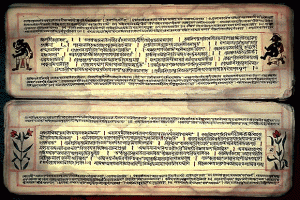
> Hinduism: A Holistic Way of Life <
The Hindu Vedas & Puranas elucidate on not only theology and mytho
Yoga is a way of life, an art of righteous living or an integrated system for the benefit of the body, mind and inner spirit. This art originated, was perfected and practiced in India thousands of years ago.
The references to yoga are available in > ‚Upanishads‘ < and > ‚Puranas‘ < composed by Indian Aryans in the later Vedic and post- Vedic period.
The main credit for systematizing yoga goes to Patanjali who wrote ‚Yoga Sutra‘, two thousand Years ago.
He described the principles of the full eight fold yogic discipline. He composed the treatise in brief code words known as ‚Sutras‘.
Yoga is a way of life, an art of righteous living or an integrated system for the benefit of the body, mind and inner spirit. This art originated, was perfected and practiced in India thousands of years ago. The references to yoga are available in ‚Upanishads‘ and ‚Puranas‘ composed by Indian Aryans in the later Vedic and post- Vedic period.
The main credit for systematizing yoga goes to Patanjali who wrote ‚Yoga Sutra‘, two thousand Years ago. He described the principles of the full eight fold yogic discipline. He composed the treatise in brief code words known as ‚Sutras‘. > ‚Yoga Sutra‘ < is the most important basic text on Yoga. It is through this basic treatise that the essential message of yoga spread throughout the world.
Aim of Yoga is the attainment of the physical, mental and spiritual health. Patanjali has recommended eight stages of Yoga discipline. They are:
-
Yamas- Yamas (abstentions or restrains)
-
Niyamas- Niyamas (observances)-austerities, purity, contentment, study, surrender of the ego
-
Asanas- Physical postures or exercises
-
Pranayama- Control of vital energy (Breathing control)
-
Partyahara- Withdrawal of the senses
-
Dharana- Concentration of the mind (Contemplation)
-
Dhyana- Meditation
-
Samadhi- Attainment of The super conscious state
Quelle Astrojyothi: > The Puranas < are the richest collection of mythology in the world. Most of them attained their final form around 500 A.D. but they were passed on as an oral tradition since the time of Krishna (c. 1500 B.C.).
There are eighteen major Puranas and a few minor ones. Each is a long book consisting of various stories of the Gods and Goddesses, hymns, an outline of ancient history, cosmology, rules of life, rituals, instructions on spiritual knowledge. Hence the Puranas are like encyclopedias of religion and culture and contain material of different levels and degrees of difficulty.
The most important Puranas are the VISHNU PURANA, SHIVA PURANA and MARKENDEYA PURANA (to the Goddess). The BHAGAVATA PURANA is important to the worshippers of Krishna. Other Puranas are the Vayu, Agni, Skanda, Kalki, Linga.
„The Vedas and Puranas are one and the same in purpose. They ascertain the Absolute Truth, which is greater than everything else. The Absolute Truth is ultimately realized as the Absolute Personality of Godhead with absolute controlling power. As such, the Absolute Personality of Godhead must be completely full of opulence, strength, fame, beauty, knowledge and renunciation.“
The Puranas are perhaps the most important or commonly used scriptural texts of the Hindus. They were guide books for the whole of life and society.
- Dein Ayurveda Net: ….. > “ Patanjali „ <
- Dein Ayurveda Net: ….. > “ Ashtanga “ <
- Dein Ayurveda Net: ….. > “ Purana “ <
- Dein Ayurveda Net: ….. > “ Agama“ <
- > Meet Patanjali Groups at facebook <
- > Meet Upanishad Groups and Study at facebook <
PATANJALI – DIE WURZELN DES YOGA
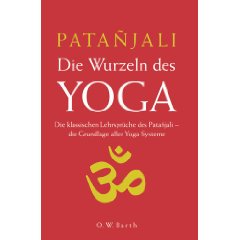
Die klassischen Lehrsprüche des Patanjali
von Bettina Bäumer
> YOGA & AYURVEDA von Vinod Verma <
Patanjalis Yoga-Sutras und ihre Anwendung auf Ayurveda
Patanjali (Sanskrit, पतञ्जलि, Patañjali, [pʌtʌɲʤʌlɪ]) war ein indischer Gelehrter, der die heute noch vollständig überlieferten Yoga-Sutras verfasst haben soll. In der indischen Mytholgie gilt er als Inkarnation des Schlangenkönigs Shesha. Über das Leben von Patañjali ist jedoch nichts bekannt, auch nicht wann er gelebt hat. Es ist nicht einmal sicher, ob er eine historische Persönlichkeit war. Indische Tradition setzt ihn mit dem Grammatiker gleichen Namens, der im 2. Jahrhundert vor Christus lebte, gleich. Da der Wortschatz des Grammatikers und des Schreibers jedoch stark von einander abweichen, gehen Indologen davon aus, dass es sich nicht um die gleiche Person handelt. Vielmehr sind sie aufgrund bestimmter Formulierungen, die sich auch im Spätbuddhismus finden, der Ansicht, das Werk sei im 4. oder 5. Jahrhundert nach Christus entstanden.
Wörtlich übersetzt bedeutet Sutra „Faden“. Das Yoga-Sutra ist also gewissermaßen ein Leitfaden für Yoga, der anders als die Bhagavadgita keine Rahmenhandlung besitzt und auch nicht gesungen wurde. Das Yoga-Sutra von Patañjali besteht aus 195 Sanskrit-Versen, in denen in hochkonzentrierter Form die Essenz des Yoga-Weges gebündelt ist. Es ist eine der ältesten Überlieferungen der Yoga-Tradition. Diese Form des Yoga wird als Raja Yoga oder Ashtanga Yoga (achtgliedriger Yoga) bezeichnet.
Kurzbeschreibung
Diese klassischen Lehrsprüche bilden die geistige Grundlage aller Yogasysteme. Sie stammen aus Überlieferungen, die wahrscheinlich im 2. Jahrhundert v. Chr. von Patañjali aufgezeichnet wurden. Die Vielfalt der Schulen und Richtungen, die sich im Laufe der Jahrhunderte entwickelt haben, geht auf diese älteste Quelle zurück. Die 195 prägnanten Sentenzen weisen den »königlichen Weg« zur vollkommenen inneren Befreiung durch rechte Erkenntnis. Er führt schrittweise , ohne Askese und gewaltsame Unterdrückung der Denkvorgänge, zum Verständnis der Wirklichkeit. Im Yoga leben heißt, unmittelbar, von Augenblick zu Augenblick, ohne hemmende Bindung an die Vergangenheit, ohne eingeschliffene Gewohnheiten oder eine überkommene Weltanschauung leben. P.Y. Deshpande, ein bekannter Schriftsteller und Publizist, hat sich über vierzig Jahre lang in Theorie und Praxis mit Yoga beschäftigt. Seine Einsichten, die Früchte dieser langjährigen Erfahrung, bilden zusammen mit den von Bettina Bäumer aus dem Sanskrit übertragenen Sutren ein unentbehrliches Standardwerk auf dem Gebiet des Yoga.
Das Yoga Shala Herbstprogramm 2009

www.yoga-shala.at
Liebe Yogafreunde!
für Euch und alle, die ihr kennt und denen ihr es weiterleiten wollt:
Das Yoga Shala Vienna startet den Herbststundenplan mit vielen neuen Kursen:
ASHTANGA VINYASA YOGA GRUNDKURS
Die Teilnehmer werden in 10 Einheiten in die Welt des Ashtanga Vinyasa Yoga eingeführt. Erklärt werden unter anderem:
* verschiedene Positionen (Asanas)
* die spezielle Atemtechnik (Ujjayi)
* die Einheit von Atmung und Bewegung (Vinyasa)
* Entspannung (Savasana)
Kursstart:
1. Kurs: 18.September, Freitag 19:00 – 20:30
2. Kurs: 7.Oktober, Mittwoch 17:00 – 18:30
YOGA FÜR KINDER
Kannst Du…
… brüllen wie ein Löwe?
… dich recken und strecken wie eine Katze?
… fest stehen wie ein Baum?
… ganz zur Ruhe kommen wie ein Stein?
Das und vieles mehr kannst Du bei uns erleben – komm und mach mit!
ab 6. bzw. 8. Oktober, Dienstag oder Donnerstag, jeweils 15:30 – 16:30
Des Weiteren…
WHAT IS BHAKTI-YOGA ?
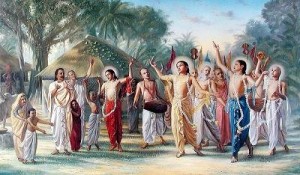
WHAT IS BHAKTI YOGA ?
by Dr. Acharya Trigunateet Jaimini
The term Bhakti comes from the root ‚Bhaj‘, which means ‚to be attached to God‘. Bhajan, worship, Bhakti, Anurag, Prem, Priti are synonymous terms. Bhakti is love for love’s sake. The devotee wants God and God alone. There is no selfish expectation here. There is no fear also. Therefore it is called ‚Parama Prem Rupa‘. The devotee feels, believes, conceives and imagines that his Ishtam (tutelary deity) is an Ocean of Love or Prem. Bhakti is the slender thread of Prem or love that binds the heart of a devotee with the lotus feet of the Lord. Bhakti is intense devotion and supreme attachment to God. Bhakti is supreme love for God. It is the spontaneous out-pouring of Prem towards the Beloved. It is pure, unselfish, divine love or Suddha Prem. There is not a bit of bargaining or expectation of anything here. This higher feeling is indescribable in words. It has to be sincerely experienced by the devotee. Bhakti is a sacred, higher emotion with sublime sentiments that unites the devotees with the Lord. Mark how love develops. First arises faith. Then follows attraction and after that adoration. Adoration leads to suppression of mundane desires. The result is single-mindedness and satisfaction. Then grow attachment and supreme love towards God. In this type of highest Bhakti all attraction and attachment which one has for objects of enjoyment are transferred to the only dearest object, viz., God. This leads the devotee to an eternal union with his Beloved and culminates in oneness.
YOGA IM BUDDHISMUS
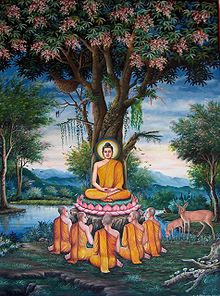
*
> The Eight-Fold Path Of Bhagwan Buddha <
Compiled by: Prabhat Tiwari
Lord Buddha was a contemporary of Maharshi Patanjali, the propagator of the ‘Yoga Darshana’. Just as Patanjali suggested that yoga has eight steps (ashtanga yoga) with a final goal as ‘samadhi’, Buddha too has suggested eight steps to ‘samadhi’. – Editor
Buddha says, “Wrongs are many, right is one, so how can the right be against the wrong? Right is that which is not your invention. It is already there. If you go away from it you are wrong, if you come close to it you are right. The closer you are, the more right you are. One day, when you are exactly home, you are perfectly right.”
Samyak and samadhi both start with the same root sam (equal). Samyak is the step towards samadhi. So seven steps ultimately lead to the final step ‘samadhi’. ‘Samadhi’ means – now everything has fallen in tune with existence.
These eight steps are just indicators of how to come to that ultimate courage where you take the quantum leap and you simply disappear. When the self disappears, the Universal Self arises.
> The Noble Eightfold Path < describes the way to the end of suffering, as it was laid out by > Siddhartha Gautama < . SiddhÄ�rtha Gautama (Sanskrit, m., सिद्धार्थ गौतम, SiddhÄ�rtha Gautama; Pali: Siddhattha Gotama) was a spiritual teacher in the north eastern region of the Indian subcontinent who founded Buddhism.
It is a practical guideline to ethical and mental development with the goal of freeing the individual from attachments and delusions; and it finally leads to understanding the truth about all things. Together with the Four Noble Truths it constitutes the gist of Buddhism. Great emphasis is put on the practical aspect, because it is only through practice that one can attain a higher level of existence and finally reach Nirvana. The eight aspects of the path are not to be understood as a sequence of single steps, instead they are highly interdependent principles that have to be seen in relationship with each other.
* Buddha mit seinen ersten 5 Schülern unter dem Bodhi Baum, Pappel-Feige (Ficus religiosa), auch Buddhabaum, Bobaum oder Pepul-, Pepal-, Pipul- oder Peepalbaum.
Buchtipp – Yoga in America
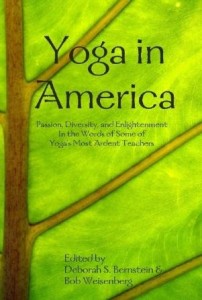
by Deborah S. Bernstein & Bob Weisenberg
This is the story of Yoga in America, as told by 46 ardent teachers and devotees from every part of the Yoga spectrum. 46 unique and compelling essays on what Yoga is in America representing the major yoga traditions, Bikram, Kundalini, Ashtanga, Kripalu, Iyengar and some that are much less widely known.
The 46 writers assembled in this book show both the great diversity of Yoga and its unifying principles.
Yoga Nidra – die Qualität des Schlafes
Skandinavische Yoga und Meditationsschule
in Hannover und im Landhaus Harbergen
www.yogaimzentrum.de
Es ist Swami Satyananda Saraswati, dem Begründer der Bihar School of Yoga (www.yogavision.net) in Munger, Indien, zu verdanken, dass uns heute eine Tiefenentspannung zur Verfügung steht, deren Wirkungen weit über die gewohnte Vorstellung von Entspannung hinaus geht. Er nannte die aus der alten tantrischen Wissenschaft entnommene Methode oder Übung Yoga Nidra.
Durch ein eigenes Erlebnis motiviert, studierte er die tantrischen Schriften. Aus den komplizierten und zeitaufwendigen Praktiken entwickelte er ein neues System, das den heutigen Bedürfnissen angepasst ist, und unabhängig von Alter, Religion oder Kultur von jedem angewendet werden kann.
pratyahara
Pratyahara ist der fünfte Aspekt der acht Stufen des Ashtanga Yoga oder Raja Yoga (achtgliedriges Yoga), wie dies von Patanjali in einem der ältesten überlieferten Werke über Yoga, dem Yoga-Sutra beschrieben wurde. Es folgt auf das Pranayama (4. Stufe, die Beherrschung des Atems) und führt zum Dharana (6. Stufe, Konzentration) und Dhyana (Meditation). Es geht um die Disziplinierung der Sinne (Indriya, „Fühler“), wie Geschmack, Sehen, Hören, Riechen, Fühlen und des Geistes durch ein Sich-nach-innen-richten.
Durch diese Internalisierung des Bewusstseins sollen Sinneseindrücke allgemein bewusster und kontrollierbarer werden. Durch regelmäßiges Üben wird so die Durchführung weiterer Stufen erleichtert. Es handelt sich aber nicht um eine Beschränkung der Sinne, im Gegenteil soll der Geist zur Wahrnehmung von Feinheiten geschult werden, die den Sinnen sonst verborgen blieben.
Auf fortgeschrittenem Niveau wird auch gelehrt, wie die Aktivität der unwillkürlichen Muskulatur beeinflusst werden kann. Diese Techniken gehen fließend in das Pranayama über. Eine andere Technik des Pratyahara ist die Konzentration auf den Punkt zwischen den Augenbrauen, das Ajna-Chakra (drittes Auge).


